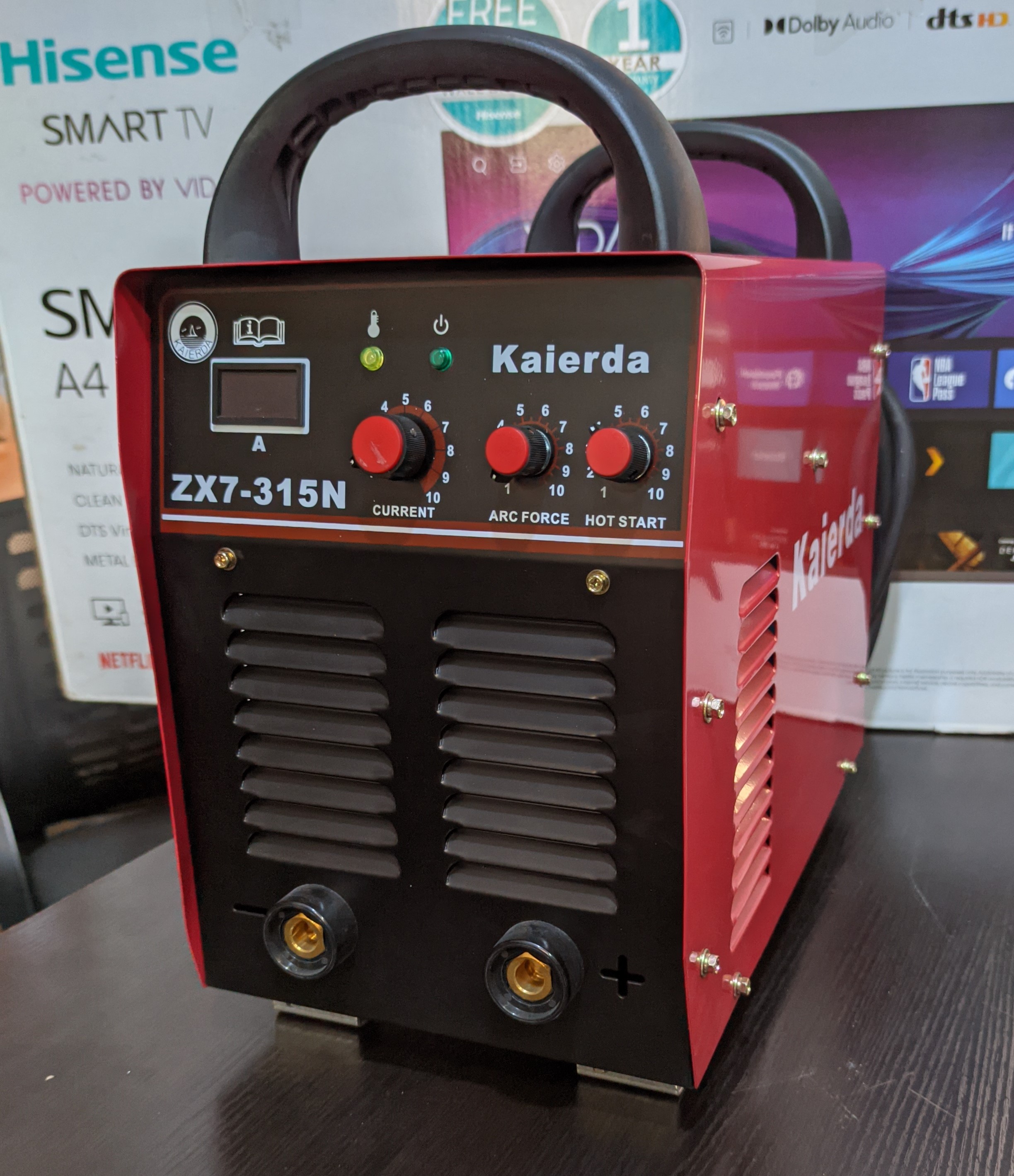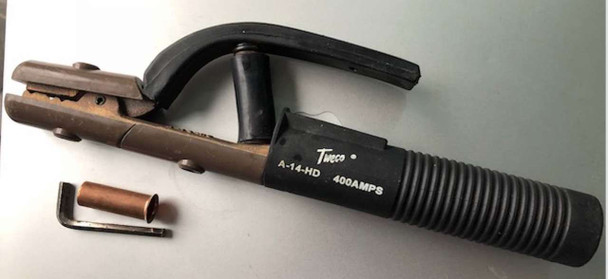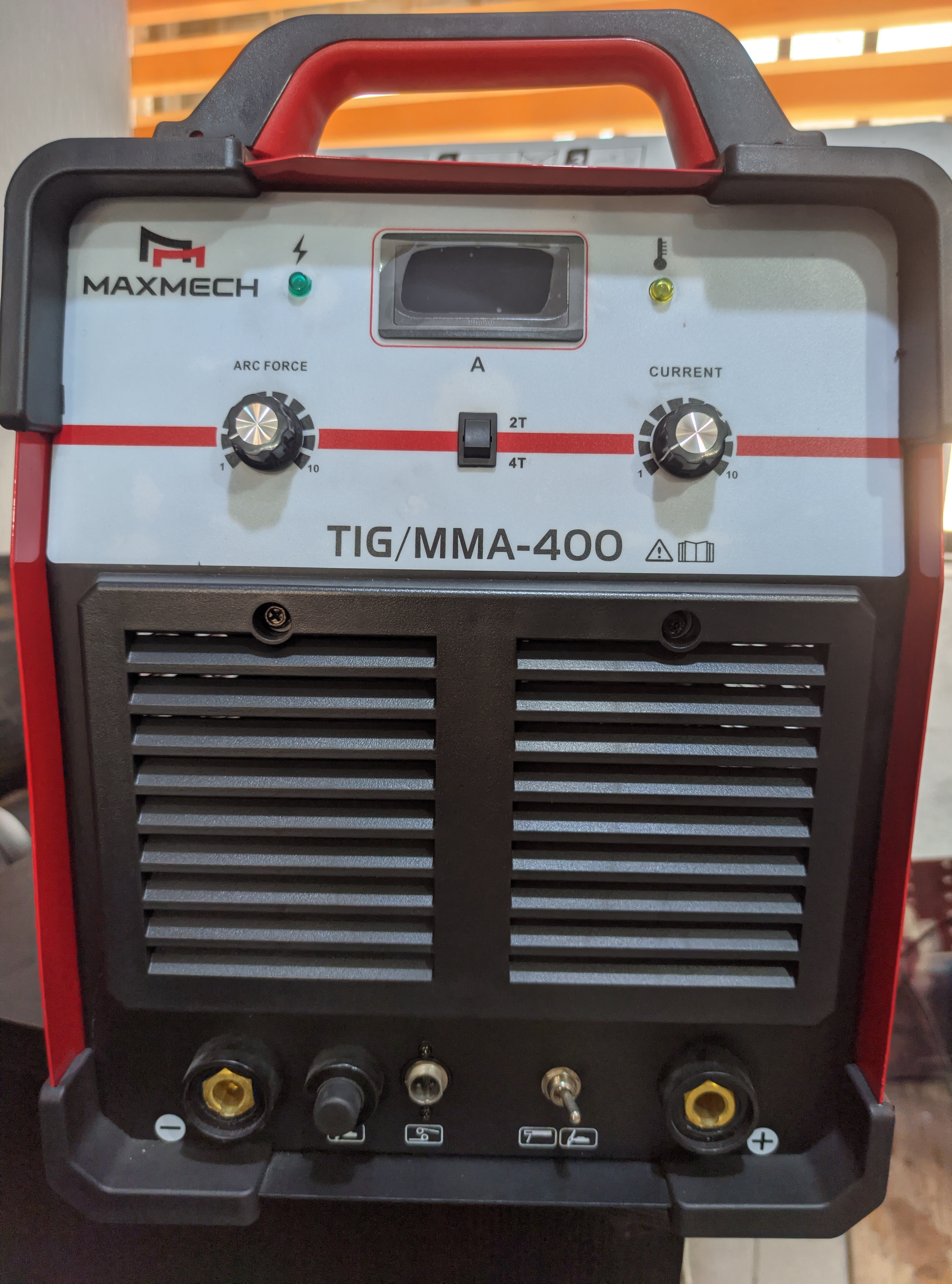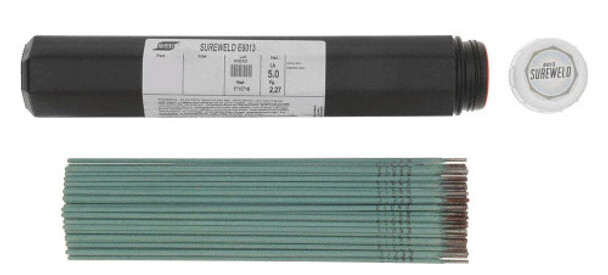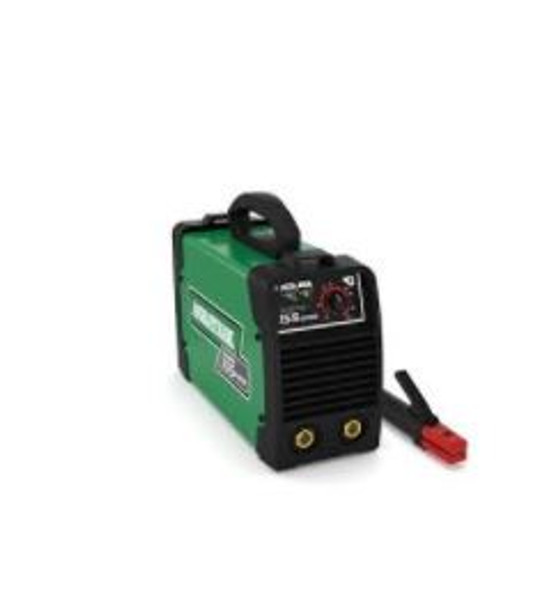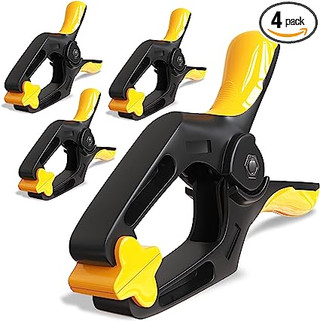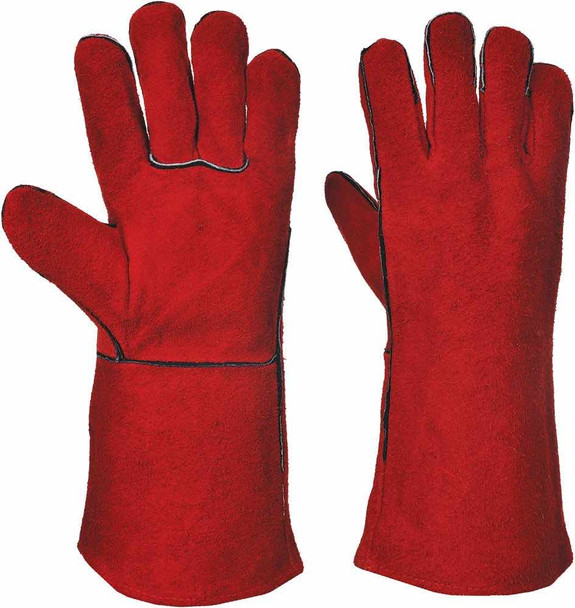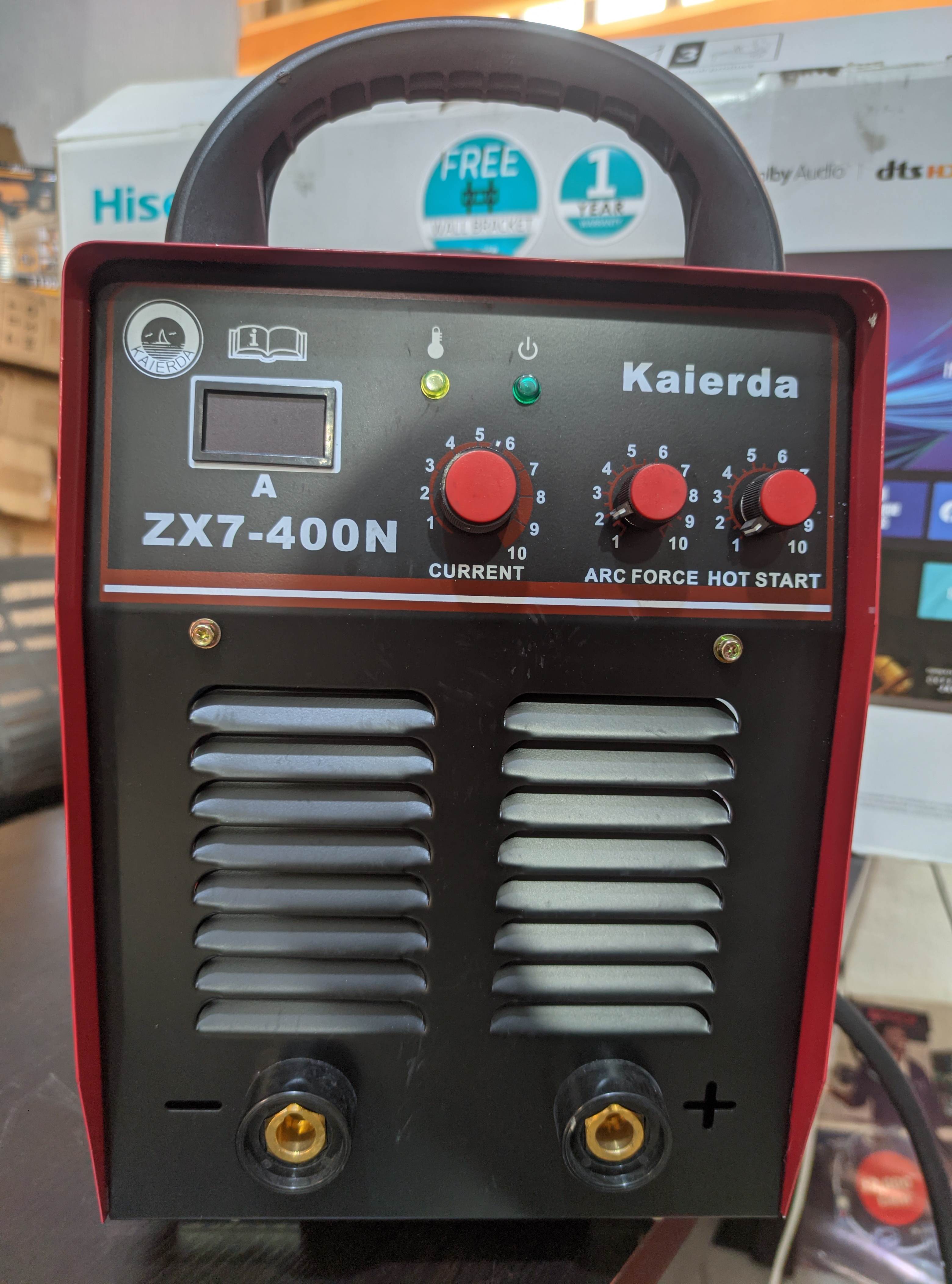Troubleshooting Common Welding Problems: Expert Tips and Solutions
Are you frustrated with common welding problems that seem to appear out of nowhere? Don't worry, you're not alone. From inconsistent welds to weak joints, welding issues can be a headache for both beginners and seasoned professionals. But fear not! In this article, we'll provide you with expert tips and solutions to troubleshoot these common welding problems.
Kaierda Electric Welding machine WN-315N
Whether you're dealing with spatter, porosity, or distortion, we've got you covered. Our team of welding professionals has decades of experience and will guide you through the process of identifying and resolving these issues. No more wasting time and resources, wondering what went wrong.
In this comprehensive guide, we'll break down each problem, explain their causes, and provide step-by-step solutions to get your welding projects back on track. Our goal is to equip you with the knowledge and techniques necessary to overcome these obstacles with confidence and precision.
So, join us as we dive into the world of welding troubleshooting and arm yourself with the expertise needed to produce flawless welds every time.
Understanding the Causes of Welding Problems
Welding problems can occur due to various factors, including improper technique, equipment issues, or even environmental conditions. Understanding the root causes of these problems is crucial in effectively troubleshooting them.
One common cause of welding problems is poor preparation of the base metal. Before starting any welding project, it's essential to ensure that the surfaces to be welded are clean and free from any contaminants. Oil, grease, rust, or paint can negatively affect the weld quality and lead to issues such as porosity or lack of fusion.
Another factor that contributes to welding problems is incorrect welding parameters. Welding machines have specific settings for different materials and thicknesses. Using the wrong settings can result in weak welds, excessive spatter, or even damage to the base metal.
Additionally, problems can arise from inadequate shielding gas coverage. Shielding gas is crucial for protecting the weld pool from atmospheric contamination. Insufficient gas flow or improper gas composition can cause porosity or oxidation, compromising the integrity of the weld.
Tweco® Welding electrode holder 400 amps
Common Welding Problems and Their Symptoms
- Spatter: Spatter refers to the small droplets of molten metal that are expelled during the welding process. It can be a nuisance as it can cause rough surfaces and require additional cleaning. Spatter is often caused by high current levels, improper wire feeding, or using the wrong shielding gas.
- Porosity: Porosity appears as small holes or voids within the weld metal. It is typically caused by gas entrapment during the solidification process. Contaminated base metal, inadequate shielding gas, or improper welding technique can all contribute to porosity.
- Distortion: Distortion occurs when the weld metal and surrounding base metal undergo significant changes in shape or dimensions due to the heat generated during welding. It can lead to misalignment, warping, or even cracking. Factors such as improper weld sequence, inadequate fixturing, or excessive heat input can contribute to distortion.
- Lack of Fusion: Lack of fusion happens when the weld metal fails to properly fuse with the base metal or previously deposited weld metal. It can result in weak joints or even complete failure of the weld. Common causes include insufficient heat input, improper welding technique, or using the wrong welding process for the application.
Welding Problems in Different Types of Welding Processes
Each welding process comes with its own set of unique challenges and potential problems. Let's take a closer look at some common welding problems encountered in different types of welding processes.
1. MIG/MAG Welding:
MIG/MAG welding, also known as Gas Metal Arc Welding (GMAW), is a widely used process for its versatility and ease of use. However, several issues can arise during MIG/MAG welding.
One common problem is wire feeding difficulties. If the wire doesn't feed smoothly or consistently, it can lead to erratic weld bead appearance, inconsistent penetration, or even wire burn-back. This problem can be caused by improper wire tension, liner blockage, or issues with the wire drive system.
Another challenge in MIG/MAG welding is excessive spatter. Excessive spatter can not only affect the weld appearance but also require additional cleanup. High welding currents, incorrect wire stick-out, or using the wrong shielding gas can contribute to spatter formation.
Maxmech Inverter Welding Machine TIG/MMA 400
2. TIG Welding:
Tungsten Inert Gas (TIG) welding is known for its precision and ability to produce high-quality welds. However, it also has its share of potential problems.
One common issue in TIG welding is tungsten electrode contamination. Contaminated electrodes can lead to weld defects such as porosity or lack of fusion. Contamination can occur due to improper electrode handling, touching the electrode to the base metal, or using the wrong electrode material.
Another challenge in TIG welding is the formation of a "keyhole" in the weld pool. A keyhole is a void that can form in the weld due to excessive heat input or improper welding technique. It can weaken the weld and compromise its integrity.
3. Stick Welding:
Shielded Metal Arc Welding (SMAW), commonly known as stick welding, is a versatile process used in various applications. However, it also comes with its own set of potential problems.
One common issue in stick welding is electrode sticking. Electrode sticking occurs when the electrode becomes stuck to the base metal and cannot be easily removed. This problem can be caused by using the wrong electrode type, incorrect amperage settings, or inadequate arc length.
Another challenge in stick welding is the formation of slag inclusions. Slag is a byproduct of the welding process and needs to be properly removed to ensure a sound weld. Failure to remove slag between passes or inadequate cleaning can result in slag inclusions, compromising the weld quality.
Esab Stick Welding Electrode 3/32 x 14in 5kg E6013 Sureweld series
Troubleshooting Tips for Common Welding Problems
Now that we've identified some common welding problems and their causes, let's explore some troubleshooting tips to help you overcome these issues.
1. Spatter:
- Adjust the welding parameters to ensure proper wire speed and voltage settings.
- Use anti-spatter sprays or coatings on the base metal to minimize spatter.
- Clean the welding gun nozzle regularly to prevent spatter buildup.
2. Porosity:
- Double-check the cleanliness of the base metal and remove any contaminants before welding.
- Increase the shielding gas flow rate to ensure adequate coverage and prevent gas porosity.
- Use the correct welding technique, maintaining the correct angle and travel speed.
3. Distortion:
- Utilize proper fixturing and clamping techniques to minimize distortion.
- Employ a balanced welding sequence, alternating sides and controlling heat input.
- Preheat the base metal when necessary to reduce the temperature gradient and minimize distortion.
4. Lack of Fusion:
- Increase the heat input and ensure proper penetration by adjusting the welding parameters.
- Improve joint preparation by ensuring proper bevel angles and fit-up.
- Use proper welding techniques, such as maintaining the correct arc length and travel speed.
Electrical welding machine Inverter 155 Super Askaynak
Solutions for Common Welding Problems
In addition to troubleshooting tips, it's essential to know the appropriate solutions for common welding problems. Let's explore some effective solutions that can help you overcome these challenges.
1. Spatter:
- Adjust the welding parameters to achieve the optimal wire speed and voltage settings.
- Use anti-spatter sprays or coatings on the base metal to minimize spatter formation.
- Employ the correct shielding gas and ensure proper gas flow rates.
2. Porosity:
- Clean the base metal thoroughly to remove any contaminants before welding.
- Increase the shielding gas flow rate to provide adequate coverage and prevent gas porosity.
- Utilize proper welding techniques, including maintaining the correct angle and travel speed.
3. Distortion:
- Utilize proper fixturing and clamping techniques to minimize distortion.
- Apply a balanced welding sequence, alternating sides and controlling heat input.
- Preheat the base metal when necessary to reduce the temperature gradient and minimize distortion.
4. Lack of Fusion:
- Increase the heat input by adjusting the welding parameters to ensure proper penetration.
- Improve joint preparation by ensuring proper bevel angles and fit-up.
- Utilize proper welding techniques, such as maintaining the correct arc length and travel speed.
Hellog Heavy Duty Spring Clamps,4-Pack 6-inch.
Preventive Measures to Avoid Welding Problems
While troubleshooting welding problems is essential, preventing them in the first place is even better. By implementing preventive measures, you can save time, resources, and frustration. Here are some preventive measures to help you avoid welding problems:
- Proper Welding Technique: Ensure that you are using the correct welding technique for the specific application. Improper technique can lead to weak welds, lack of fusion, or other issues.
- Proper Equipment Maintenance: Regularly inspect and maintain your welding equipment to ensure it is in good working condition. Clean the welding gun, replace worn-out consumables, and calibrate the welding machine as needed.
- Base Metal Preparation: Thoroughly clean the base metal before welding to remove any contaminants that can affect the weld quality. Use appropriate cleaning methods such as wire brushing, grinding, or chemical cleaning.
- Correct Welding Parameters: Use the correct welding parameters for the specific material, thickness, and welding process. Refer to the manufacturer's recommendations and adjust the settings accordingly.
- Proper Shielding Gas: Ensure that you are using the correct shielding gas for the specific application. Monitor the gas flow rate and composition to maintain adequate coverage and prevent atmospheric contamination.
Welders Handglove Leather hand glove
Importance of Proper Equipment Maintenance in Preventing Welding Problems
Proper equipment maintenance is crucial in preventing welding problems and ensuring consistent, high-quality welds. Neglecting equipment maintenance can lead to various issues, including poor arc stability, wire feeding problems, or even equipment failure.
Regularly inspecting and cleaning the welding gun, replacing worn-out consumables, and calibrating the welding machine are essential maintenance tasks. These actions help ensure proper functioning and optimal performance of the equipment.
Additionally, maintaining the correct gas flow rate, checking for leaks, and replacing damaged or worn-out gas hoses are critical for preventing shielding gas-related problems.
By prioritizing equipment maintenance, you can minimize the risk of welding problems, improve productivity, and extend the lifespan of your welding equipment.
Kaierda Inverter DC MMA Welding Machine ZX7-400N
Seeking Professional Help for Complex Welding Problems
While many welding problems can be resolved with the troubleshooting tips and solutions provided in this article, some issues may require the expertise of a professional. Complex welding problems, such as those involving specialized materials or critical applications, may necessitate the assistance of a qualified welding engineer or technician.
Professional help can provide valuable insights, advanced techniques, and specialized equipment to tackle challenging welding problems. It's important to recognize when a problem exceeds your capabilities and seek professional assistance to avoid further complications or safety hazards.
Remember, safety should always be a priority when dealing with welding problems. If you're unsure about how to address a particular issue, it's better to consult a professional rather than risk compromising the integrity of your welds or jeopardizing your safety.
Conclusion
In conclusion, troubleshooting common welding problems requires a systematic approach and an understanding of the causes behind these issues. By identifying the root causes, implementing the appropriate troubleshooting tips and solutions, and taking preventive measures, you can overcome these challenges and produce flawless welds.
Remember, practice makes perfect. The more experience you gain, the better equipped you'll be to handle welding problems effectively. Continuously expand your knowledge, stay updated with industry advancements, and never hesitate to seek professional help when needed.
So, embrace the world of welding troubleshooting with confidence and precision. Armed with the expert tips and solutions provided in this article, you're well on your way to overcoming common welding problems and achieving exceptional welding results.
Related Articles:
Welding in Harsh Environments: Tips and Best Practices
How to Maintain and Care for Your Welding Equipment


